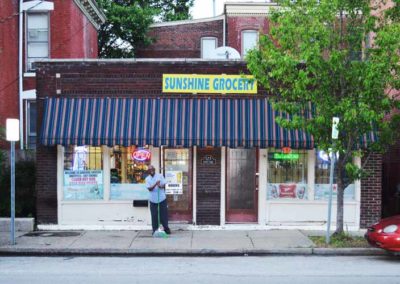
Traditional Neighborhoods
Traditional Neighborhoods

Louisville’s earliest neighborhoods developed in a compact manner, with buildings constructed close together on small lots, streets were built in a grid pattern with service access from alleys.
The wealthy traveled by horse and carriage, but most walked to where they needed to go. Corner stores served the daily needs of the neighborhoods and shopkeepers lived above their shops. The Portland and Butchertown neighborhoods still have examples of these types of businesses today.
When horse drawn street cars (c. 1864), and electric street cars (c. 1889) arrived, people relied less on walking, and newer commercial districts emerged along with housing within walking distance to street cars, while streets continued to be built along a grid. The development of the Olmsted Parks system in the late 1800s contributed to Louisville’s expansion towards the east, south, and west, and along the three main parkways: Eastern, Southern, and Algonquin.
Today, we think of these older neighborhoods as “traditional” because of their age, historic importance, and location, and other characteristics that include narrow lots, alleyways, on-street parking, curb side trees, a mix of housing and architectural styles, and nearby parks and green spaces.
Traditional neighborhoods are one of the more cherished patterns of earlier developments that have helped to create a new approach to land development, that includes zoning provisions and guidelines, to try to help shape new neighborhoods and commercial districts.


